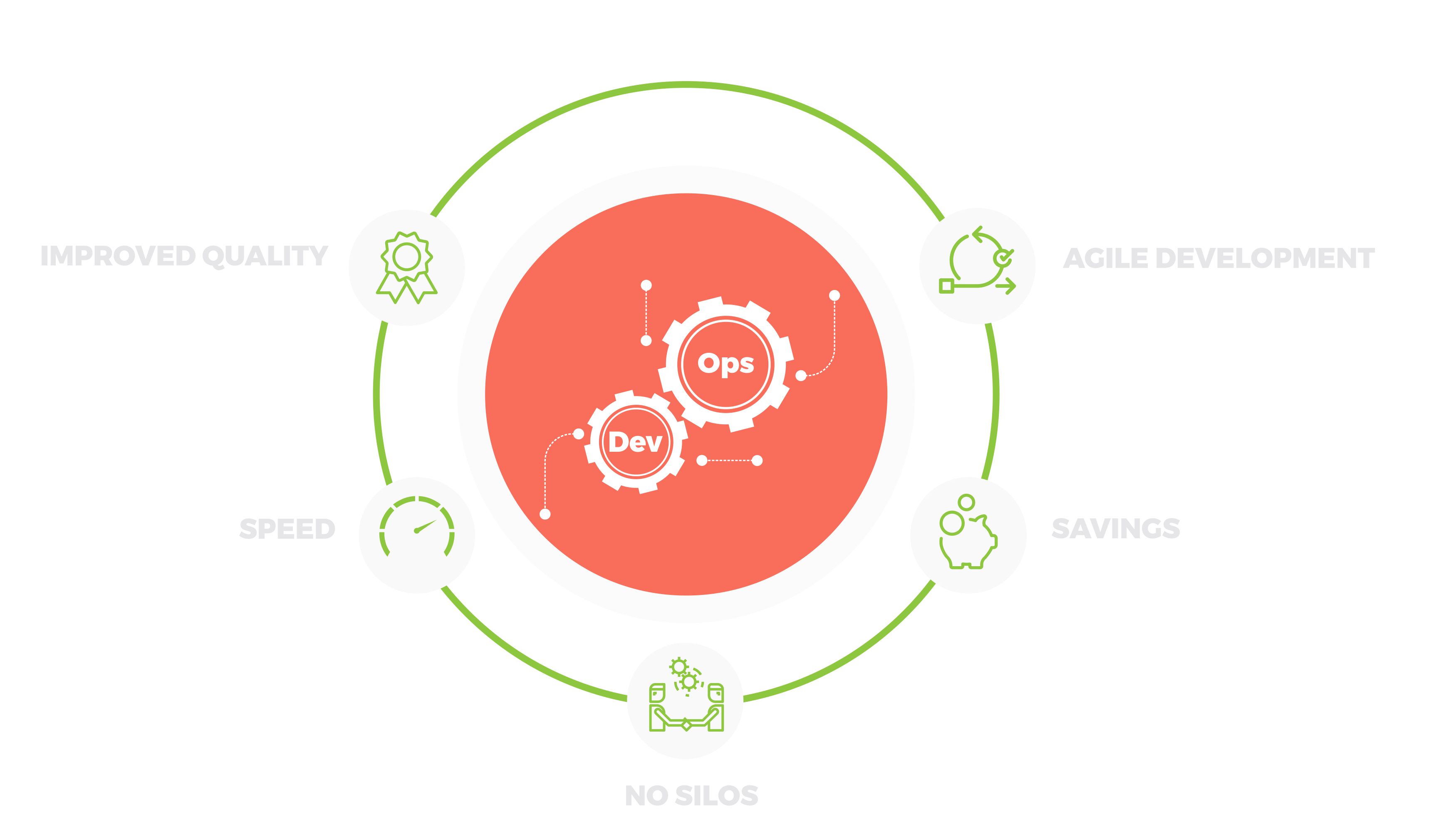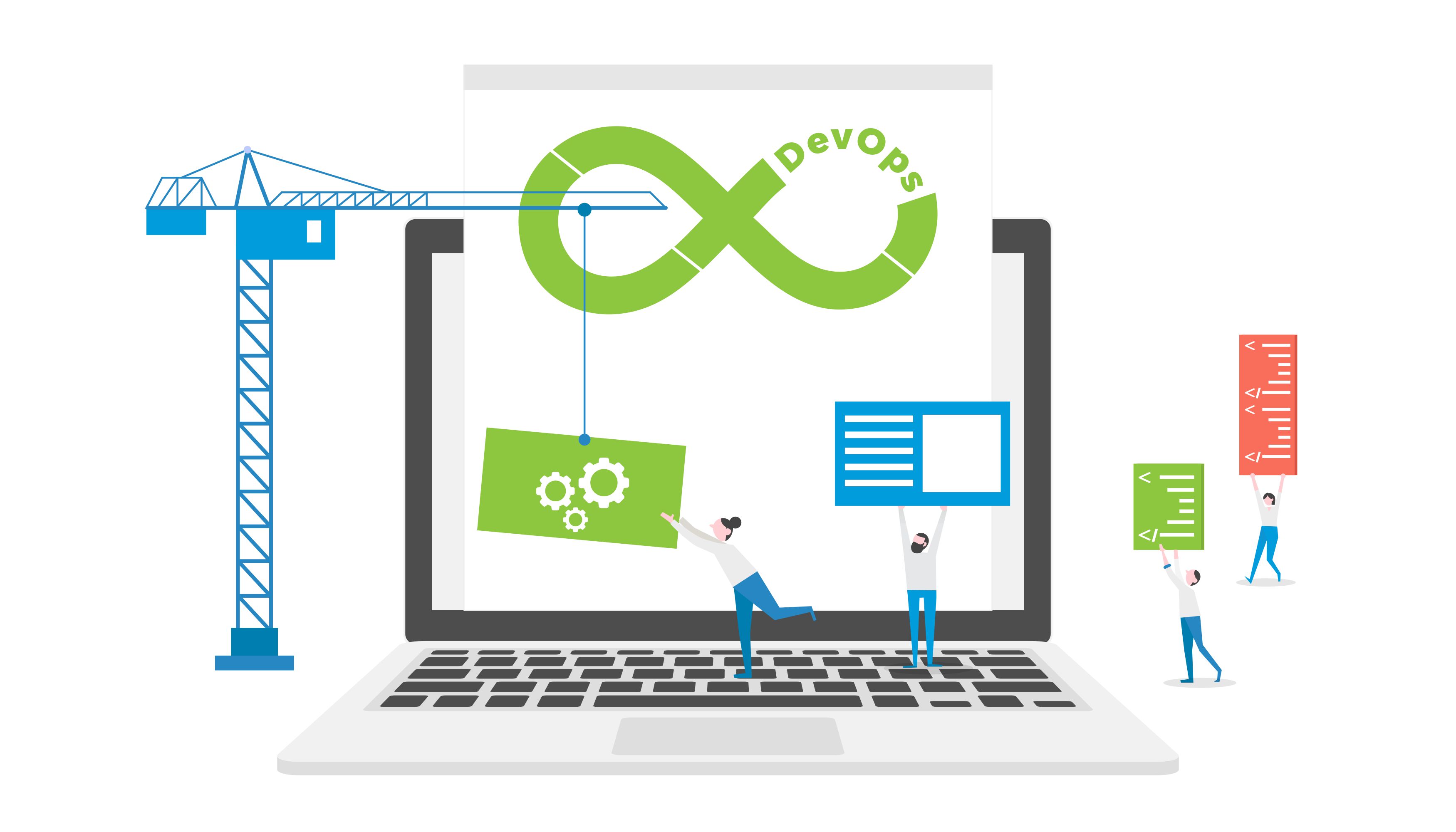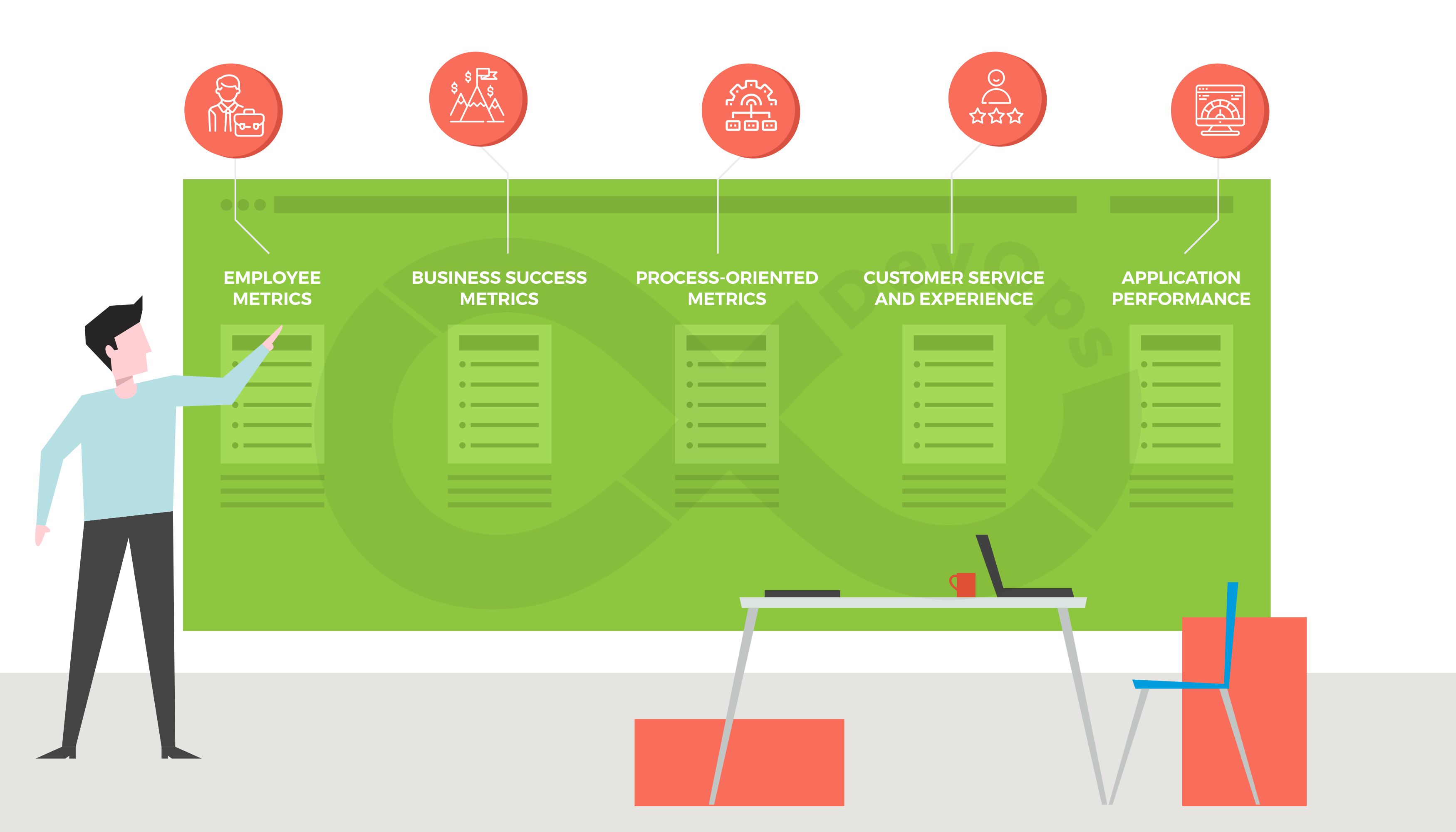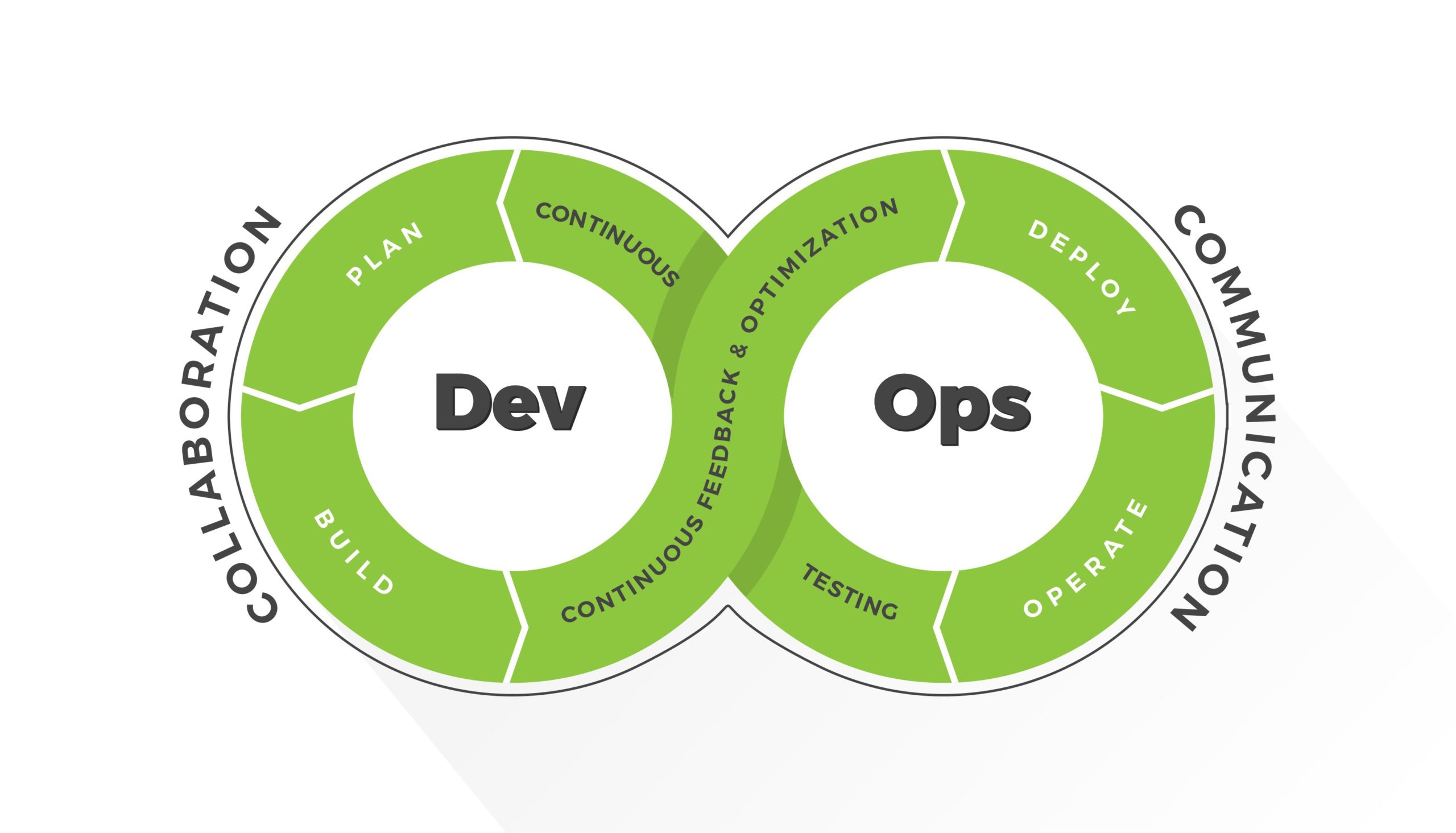What is DevOps?
DevOps is a coordinated effort between IT operations and software development teams that promotes collaboration, communication and integration. For DevOps to be an effective part of your IT team, software development can no longer operate in isolated silos. Instead, application development and releases are divided into stages — delivering reliability, integrity and high availability.
Teams that practice DevOps deploy 30x more frequently, have 60x fewer failures, and recover 160x faster.
— Puppet Labs 2016 State of DevOps Report
Benefits of DevOps
What are the advantages you’re likely to see with DevOps?
What makes DevOps really stand out from other systems or philosophies – which in turn makes you and your business stand out, too?

Speed
One of the biggest advantages of DevOps is that each team member isn’t pigeonholed into one role. Everyone plays multiple roles, allowing each team member to operate cross functionally.
This fact alone makes processes more efficient and speeds things up.
In a world where people have learned to be impatient, DevOps can help you speed up your delivery to customers.
For example, these days people expect sites to load in under three seconds. Every additional second could mean a few thousand (or even million) dollars in lost revenue. It’s critical that sites and applications load quickly.
So how can you develop your programs and sites to be leaner, faster and more efficient? By using a leaner, faster, more efficient development method in the first place.
The essential elements of DevOps – faster deployments, easier remediation of coding errors, faster deployment cycles – are the same elements that will help you build better and faster and ultimately turn out a superior product.
This is how DevOps has captured the attention of organizations globally.
No silos
When teams work separately from each other, using a step-by-step-it’s-your-turn-now sort of “waterfall” approach, you don’t have a lot of interference between teams – but you don’t have a lot of collaboration and innovation either as a result.
In fact, in most cases support is painfully slow and the end product suffers because of the lack of communication and teamwork.
The DevOps approach favors total transparency and a work culture that encourages, harbors and values opinions from members of each team involved in the process.
DevOps breaks up the massive roadblocks that silos create.
How To Design a DevOps Strategy:
Hierarchical organization may help provide structure and direction, but it also constructs massive roadblocks to getting things done on time as you wait on input and approvals from people who may or may not be intimately familiar with your current project.
Such delays reduce delivery efficiency and can make you lose customers in the long term.
The Agile approach embodied in DevOps ensures that small teams self-organize and communicate with each other, making it easier for them to reach their goals. Especially business goals.
The traditional approach separates software delivery from operations. As a result, the customer experience often gets put on the backburner.
With DevOps, customer service and UX get the front seat.
Improved quality
Software development teams are expected to deliver on quality software on a consistent basis. But when lots of projects pile up, it’s hard to focus as much on quality. Before you know it, cutting corners becomes the norm. Not with DevOps. With unplanned and unscheduled work thrown out the window, consistent delivery and optimization become the primary focus, helping you reach your targets and optimize delivery to market timing.
Agile development
DevOps helps a business achieve the scalability it needs without compromising on agility – with fewer errors and missteps.
Savings
Backups and rollovers help automate the workflow and design process, putting an end to many time-consuming (and payroll-consuming) manual processes.
Instead, teams get to optimize their time, working on things that bring money to the table, such as coding, design and configuration.
The benefits attributed to DevOps far outweigh the associated costs. It creates a fundamental shift in how IT and operations teams work.
Collaboration between teams and in-tandem development provides a holistic approach to software development.
In a nutshell, here are some of the benefits you can expect when you use DevOps in your own organization:
- Software delivery is on time and continuous.
- The learning curve is steep, but management is less complicated later.
- Problems are remediated quickly, approximately 200 times faster than other approaches.
- Features can be delivered quickly.
- A robust operating environment helps execute deployments faster.
- Improving your work culture and fostering team spirit leads to innovation.
How is DevOps Different From Traditional IT?
As you can probably already guess, DevOps beats the traditional approach to IT in almost every way. Learn how you can take advantage of it by calling us now or you can take a look at our DevOps services page.
Why DevOps?
Businesses choose to apply DevOps, because it has the potential to:
- Eliminate a lot of hassle – and frustration
- Reduce communication delays and miscommunication to nearly zero
- Reduce problems that result from delivery delays from software developers and operations teams
- Streamline workflow between teams
- Boost efficiency
How does DevOps accomplish these amazing feats?
DevOps is about people and culture first and then about using technology to achieve your final results.
One of the central tenets of DevOps is about applying the core concepts of Agile methodology to both software development and operations. Making this cultural shift gets operations and development engineers working together, eliminating hassle and opening up lines of communication.
The impact from the use of DevOps is going to be huge.
Gartner, Inc. says that DevOps will go from being a niche to a mainstream strategy that will eventually be used by at least 25% of global 2000 organizations.
The 2016 State of DevOps Report reveals that in businesses that have applied DevOps to their company culture, the sheer number of project deployments is about 200 times higher than without DevOps. Lead times are about 2,555 times shorter (i.e., the time between intent to deploy code and code being in production).
The coding moves quickly from production to deployment stage, minimizing the scope for errors.
 Gartner’s report reveals that organizations using DevOps benefit from:
Gartner’s report reveals that organizations using DevOps benefit from:
- Fast cycle times
- Fast realization of business cycles
- Improved release success rates
- Improved customer satisfaction
- Faster resolution rates
- Fewer defects
- Less time spent dealing with unwarranted incidents
Differences between a traditional approach and the DevOps approach
The traditional approach doesn’t always emphasize collaboration. The operations team is left hanging without any clue regarding what is being coded and created and doesn’t receive much (if any) help from developers.
With DevOps, each stage of progress is accounted for and every change is communicated and discussed. Every stakeholder viewpoint is taken at face value and addressed.
Better communication leads to better collaboration.
The traditional approach thrives on a “waterfall” approach. Here, the path goes way down with steps progressing one after the other. With DevOps, the approach is cyclical and in tandem, acting on feedback from all teams.
The traditional approach involves manual intervention, creating tickets and reacting to problems as they arise, which usually adds complexity and errors when it’s time to deploy and if you want to scale up.
The structured and automated approach of DevOps makes repeatable tasks easy to do, saving time and cutting down on work hours that are well spent elsewhere.
A DevOps platform accepts changes and doesn’t abhor change. The traditional platform is steel-cut into a set administrative platform that isn’t flexible enough to handle big changes easily.
Remaining flexible and responsive to change helps move things faster and makes processes much more efficient. By flaws inherent in its design, the traditional approach slows things down.
The traditional approach works on fragile systems. Any major overhaul has the potential to cause a system breakdown, losing a lot of time to unplanned work.
DevOps removes the fragility from systems, making them resistant and robust.
Faster recoveries
A survey by IT Revolution Press and Puppet indicates that services are restored 168 times faster with organizations using DevOps than at non-DevOps organizations.
A strong factor in that faster recovery time is that the procedures and tools used for development and production are the very same tools used for recovery. Automation tools in the DevOps environment are again used to quicken recovery and prevent service interruptions.
The disaster recovery environments can also double up as modules for testing the code, allowing coders to deploy their work on virtual computers and test them on the cloud before finally shipping them.
Faster deployments
Companies like Google and Amazon have been able to scale themselves to the size we see today because of the innumerable number of deployments they’re able to carry out. DevOps offers a new structural change to the way a company can operate and execute ideas and strategies, aligning the development and operations teams and merging them to one.
Considering everything, DevOps is truly transforming the IT world and business as a whole, enabling faster decisions and shipping for software products while raising efficiency and customer experience.
Contact us today to know more.
The many benefits of DevOps
DevOps results in faster deployments, quicker cycle times, minimizes defects and unplanned work. Want to get started?
Considering DevOps: Things you must know first

DevOps is taking the world by storm. It optimizes processes and makes software product delivery faster.
It also instills a new company culture that benefits everyone in the long term.
If you’re considering DevOps, here are a few things you must know first.
Let’s start by talking about the cost savings…
Reduce costs
Even though DevOps doesn’t require you to use cloud platforms, it’s well suited to cloud computing. And, moving everything to the Cloud often comes with significant cost savings over time.
When you migrate a substantial portion of (or all) your operations to the Cloud, you save money and energy not having to build, grow and maintain certain IT infrastructure. You should see a reduction in your operations budget as a result.
Customize DevOps to your needs
If an organization is going to complain about DevOps (and it does happen occasionally), it’s usually because they haven’t properly customized DevOps to fit their own unique needs.
Often that level of customization isn’t possible without some expert help and hand-holding.
Whatever the needs of your organization may be, chart them out in advance. Then, proceed to customize DevOps as needed – and get some expert help to make the road easier on you and your teams.
Invest in training and automation
Automation is a core tenet of DevOps. Automating manual processes lets your team shift their focus away from maintaining infrastructure and software and instead focus on achieving business goals and providing great customer service by hitting delivery target dates.
It’s also important to invest in the proper training for your team, so they can work on the platform and adopt the new culture more easily. Together, automation and proper training are essential to your DevOps success.
Pay attention to team building and work culture
Even though it’s a technological innovation, DevOps is steeped in improving workplace culture.
A sense of team spirit is essential to the DevOps experience and to its success. Team building is one of the first things to work on. If there are any relationship issues between members of different teams, they need to be mended.
In order to create the right cultural fit, some hiring and firing may be necessary, followed by adequate planning and restructuring of your core teams.
Recognize integration overhead and complexity issues
Another mistake organizations often make is purchasing individual point solutions for every facet of the DevOps process. This adds a needless layer of complexity. Having a different stack of tools in different teams prevents a seamless experience from happening and destroys the very objective of using DevOps.
Dissolve boundaries
DevOps doesn’t maintain strict boundaries between different team operations. It doesn’t need to.
Without these boundaries, developers have the freedom to handle issues and tackle new development. Project teams can handle emergency updates and control scheduled updates. All stakeholder opinions are heard throughout the deployment process.
Think about customer service
A customer friendly company culture shouldn’t wait until DevOps deployment begins. DevOps stresses people management but can’t create a new company culture out of scratch.
So wherever possible, make sure you’re listening to customer problems and working on solving them.
These are the considerations to keep in mind when you start your journey towards engaging in DevOps culture.
If you need clarifications and want to begin looking into DevOps for your organization, reach out to us to start the conversation. We’re always happy to discuss new ideas.
Are you considering DevOps?
Why not? It reduces costs and can be customized entirely to your needs.
Measuring DevOps: What metrics should you measure in DevOps?

Metrics are the key to running an operation successfully. They tell you if your organization is on the path you intended to be on, your progress on the path, and how long you have until you reach your goal.
More importantly, metrics will help you understand if your shift from old technology to DevOps is yielding any results – and if you can improve on any of those results.
Different metrics you might find helpful include, but are not limited to, pace of deployment, frequency of deployment, number of failures and pace of ticket resolution.
Not understanding business goals – or worse, failing to set proper goals – can cause problems for the long-term growth of your organization.
Let’s look at those key metrics.
Employee metrics
Establishing the right workplace culture is at the core of DevOps. A strong DevOps work culture includes listening to opinions and suggestions from employees and considering everyone to be part of a single team.
Examining employee performance and HR metrics, such as attrition, turnover, and customer service response times, can be used to measure the success of your DevOps implementation and help you to find areas where you can improve.
Business success metrics
For business success, key performance indicators include: Conversions, revenue per user, customer churn, number of subscriptions, and change in subscription numbers.
These indicators can tell you if your business is growing or shrinking.
Process-oriented metrics
Development to deployment lead time is one process-oriented metric you can use to measure the success of your completed projects. Year after year when the State of DevOps report comes out, findings show that lead times are considerably shorter when implementing DevOps.
If your organization hasn’t been able to shorten lead times by a good margin using DevOps, something may have gone wrong during implementation. It’s worth looking into, so you can rectify the situation sooner rather than later.
Customer service and experience
Ultimately, a client’s decision to stay with your company or go elsewhere boils down to how good his or her experience is with your organization. You can collect valuable, constructive feedback from customer service metrics, such as transaction frequency, bounce rates, number of visits, plan changes, overall customer satisfaction and time spent on your site or time spent using your app.
Application performance
Measure application performance with indicators, such as uptime, app response time and speed, and database query times. (If you’re not already collecting this data and using business intelligence tools to break it down, that would be a great step forward for collecting important performance metrics.)
If you look at the data and see things you don’t like, such as slow response times, you can then take steps to improve and speed up performance.
Concluding thoughts
DevOps is much more than the unification of two different teams – Development and Operations. It can lead to amazing improvements in the overall performance of your teams and your organization as a whole, but the complexities and potential pitfalls of implementation hide in plain sight.
Using the right metrics and tracking them regularly, you can get a solid understanding of how well your business runs – and how well your DevOps implementation has worked.
Not being able to discern between metrics that matter and those that don’t could result in drastically reduced performance, low profits and high churn.
Have questions? Want to talk about what adopting a DevOps strategy could look like in your business? Call us today just to start the conversation.






